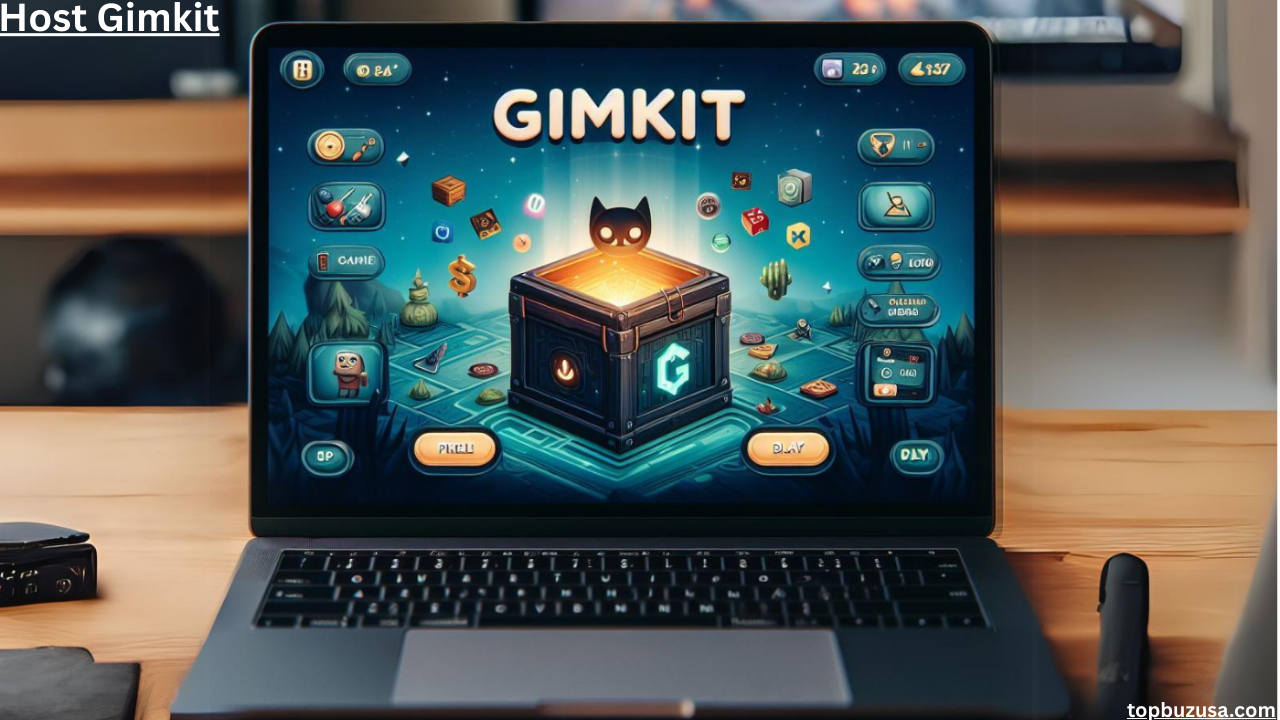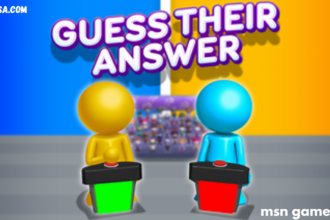Host Gimkit has rapidly gained traction as one of the most engaging and interactive tools for digital learning. Designed by a high school student who saw the flaws in traditional learning games, Gimkit takes the concept of gamified education to an entirely new level. This innovative platform combines trivia-style quizzes with powerful gaming mechanics like earning virtual currency, power-ups, and upgrades. The result? A classroom that’s buzzing with excitement, focus, and fierce (but friendly) competition.
Educators across the globe are integrating Gimkit into their lesson plans to bring a refreshing twist to review sessions, concept reinforcement, and even remote learning. But Gimkit isn’t limited to classrooms—it’s increasingly used in corporate training, study groups, and homeschool settings due to its flexibility and scalability.
Whether you’re an experienced teacher looking to level up your instruction or a newcomer trying to find your footing, this step-by-step guide will walk you through how to host a Gimkit game successfully. From account setup to game hosting strategies and post-game analytics, we’ve got you covered. Get ready to unlock the power of gamified learning!
Understanding Gimkit: The Basics
What is Gimkit?
Host Gimkit is an online quiz-based learning game platform that transforms traditional assessments into interactive, student-led experiences. While it may resemble other platforms like Kahoot or Quizizz on the surface, what sets Gimkit apart is its unique in-game economy. Instead of merely answering questions to earn points, players earn virtual currency, which they can reinvest in power-ups, score multipliers, or game enhancements. This mechanism keeps students engaged while subtly encouraging strategy, decision-making, and mastery of content.
Developed by Josh Feinsilber, a high school student at the time, Gimkit was created with a deep understanding of what students actually enjoy and what keeps them focused. It bridges the gap between entertainment and education, and it’s adaptable enough for use in various educational settings—from elementary classrooms to college lecture halls.
Key Features of Gimkit
Gimkit offers both live and asynchronous play modes. The Live mode is typically teacher-led, perfect for real-time classroom participation, while the Assignments mode allows students to play at their own pace, ideal for homework or self-study. Game modes like Classic, Team Mode, and Trust No One each offer distinct gameplay experiences, keeping students interested and ensuring the platform never feels stale.
Other features worth highlighting include auto-generated reports for quick performance review, LMS integrations (like Google Classroom), and customizable question sets called Kits. Whether you’re teaching math, science, language arts, or history, Gimkit has the versatility to suit your curriculum needs.
Setting Up Your Gimkit Account
Creating an Account
Getting started with Host Gimkit is straightforward. First, visit gimkit.com and click “Sign Up.” You’ll be prompted to choose your role—typically “Teacher” or “Student.” Educators should opt for the teacher account, which provides access to game creation, analytics, and classroom management tools. You can sign up using an email address or link your Google account for added convenience, especially if you plan to use it alongside Google Classroom.
There are two main account types: the Free plan, which allows access to basic features and limited game modes, and the Pro plan, which unlocks premium modes, unlimited Kits, and enhanced data reports. Many users find the free version sufficient for occasional classroom use, but frequent hosts will benefit significantly from the Pro features.
Exploring the Dashboard
Once your account is set up, you’ll be taken to the Host Gimkit dashboard. This is your command center, where you can create new Kits, host live games, manage classes, and view performance reports. The intuitive interface makes it easy to get started, even for first-time users.
Creating your first Kit is as easy as clicking “New Kit,” naming it, selecting a subject, and adding your questions manually or via import. You can also browse the Kit Library, which contains thousands of ready-to-use question sets. For a more streamlined experience, consider connecting your LMS (like Google Classroom) directly from the dashboard to import class rosters and assign games efficiently.
Hosting Your First Gimkit Game
Preparing Your Game

Before launching your first game, choose or create a Kit that aligns with your lesson objectives. Once selected, you’ll be prompted to customize your game settings. Options include setting a time limit, target cash goals, or enabling special power-ups like streak bonuses. Each customization can drastically affect gameplay, so it’s worth experimenting to find the ideal setup for your students or players.
Also, decide whether you want students to play individually (Classic Mode) or in teams. Classic is great for competitive spirit, while Team Mode promotes collaboration. Game themes like “The Floor is Lava” or “Snowbrawl” can add seasonal fun and variety.
Launching the Game
Click “Play Live” to launch your game. A unique join code or game link will be generated, which students can enter at gimkit.com/join. You’ll see a live dashboard showing player entries and real-time performance. Once everyone’s joined, hit “Start Game” and let the fun begin!
As the host, you can monitor progress, pause the game, or end it early if needed. For virtual or hybrid classes, you can easily share the game code via Zoom, Google Meet, or Microsoft Teams.
Post-Game Insights
After the game ends, Host Gimkit provides detailed reports showing individual and group performance, common mistakes, and question-by-question breakdowns. These insights are invaluable for educators looking to identify learning gaps or reinforce specific concepts.
Encourage students to reflect on their performance and revisit incorrect answers. This reinforces learning and encourages a growth mindset, making every Gimkit session a meaningful learning experience.
Advanced Hosting Tips & Strategies
Using Gimkit for Different Subjects
Host Gimkit is not just for quiz-heavy subjects. While it’s excellent for memorization and quick recall in math or science, it can also be used creatively in language arts, foreign languages, social studies, and even art. Try using it for vocabulary drills, grammar practice, historical timelines, or artist recognition.
Some educators even create interdisciplinary Kits that blend multiple subjects into one engaging session, encouraging cross-curricular thinking.
Engaging Students with Game Mechanics
The in-game economy is what makes Gimkit truly addictive. Students earn currency for correct answers and can use it to upgrade their earnings potential or sabotage opponents. Encourage students to think strategically—should they invest early or save for a big upgrade later?
You can also use the power-up system to create special “challenge rounds” or reward consistency over speed. Rotate through different game modes to keep students guessing and coming back for more.
Hosting Remote or Hybrid Sessions
Gimkit shines in remote learning environments. All that’s needed is a stable internet connection and a device. Combine it with video conferencing tools to keep remote students engaged in real-time.
For hybrid learning, consider assigning games as asynchronous assignments to reinforce learning at home, while using live games for in-class engagement. Use class codes and reporting tools to track participation and completion rates seamlessly.
Conclusion
Hosting a Gimkit game is more than just launching an interactive quiz—it’s about transforming the way students engage with content. With its intuitive design, strategic gameplay, and versatile teaching applications, Gimkit empowers educators to foster deeper learning through gamification. Whether you’re using it for review, reinforcement, or remote instruction, Host Gimkit offers endless possibilities to keep learners motivated and curious.
By understanding the platform’s features, preparing thoughtful Kits, and leveraging game modes effectively, you can create memorable learning experiences that students actually look forward to. So go ahead—host your first Host Gimkit game, and watch your classroom come to life with energy, competition, and learning.
Frequently Asked Questions (FAQs)
Is Gimkit free to use?
Yes, Gimkit offers a free version with limited features. A Pro version is available with expanded game modes and analytics.
How many players can join a Gimkit game?
Gimkit supports up to 60 players in live games under the free plan and more with the Pro version.
Can students play without an account?
Yes, students can join games without creating an account by using the join code.
What is the difference between Classic and Team Mode?
Classic Mode is individual play, while Team Mode groups students together, encouraging collaboration.
Can I import questions from Quizlet or Google Forms into Gimkit?
Yes, Gimkit allows you to import Quizlet sets and copy-paste questions from other sources.





